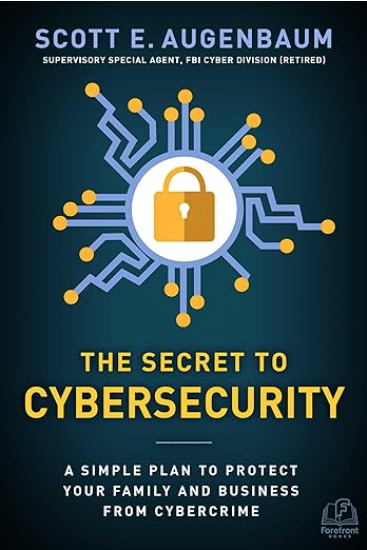Personal Cybersecurity: Essential Steps for Online Protection
In today’s digital age, our lives are increasingly intertwined with the online world. While this connectivity brings numerous benefits, it also exposes us to various cyber threats. The good news is that you don’t need to be a tech expert to protect yourself online. This guide will walk you through essential steps that anyone can take to enhance their personal cybersecurity.
1. Use Strong, Unique Passwords
Your first line of defense in the digital world is a strong password or passphrase. Here’s how to create and manage them effectively:
- Use long passwords (at least 12 characters)
- Include a mix of uppercase and lowercase letters, numbers, and symbols
- Avoid personal information like birthdates or names
- Use a unique password for each account
- Consider using a passphrase instead of a single word
Pro tip: Use a reputable password manager to generate and store complex passwords securely. This way, you only need to remember one master password.
Here are few Password Managers to choose from:
2. Enable Two-Factor Authentication (2FA)
Two-factor authentication adds an extra layer of personal Cybersecurity to your accounts. Even if someone guesses your password, they can’t access your account without the second factor, which is typically:
- A code sent to your phone
- A biometric factor (like a fingerprint)
- A physical security key
Enable 2FA on all accounts that offer it, especially email, banking, and social media accounts.
3. Keep Software Updated
Software updates often include security patches for newly discovered vulnerabilities. To stay protected:
- Enable automatic updates on your devices when possible
- Regularly check for updates on all your devices and applications
- Don’t ignore update prompts – install them as soon as possible
4. Be Wary of Phishing Attempts
Phishing is a common tactic used by cybercriminals to trick you into revealing sensitive information. Protect your personal Cybersecurity by:
- Being skeptical of unsolicited emails, especially those asking for personal information
- Checking the sender’s email address carefully
- Not clicking on suspicious links or downloading attachments from unknown sources
- Verifying requests for sensitive information by contacting the company directly through their official website or phone number

5. Use Secure Wi-Fi Connections
Public Wi-Fi networks can be a hotbed for cybercriminal activity. To stay safe:
- Avoid accessing sensitive accounts (like banking) on public Wi-Fi
- Use a Virtual Private Network (VPN) when connecting to public Wi-Fi
- Ensure your home Wi-Fi is secured with a strong password and WPA3 encryption if possible
6. Regularly Back Up Your Data
In case of ransomware attacks or device failure, regular backups can be a lifesaver. Here’s what to do:
- Set up automatic backups to an external hard drive or a secure cloud service
- Regularly test your backups to ensure they’re working correctly
- Keep at least one backup offline or in a different location
7. Be Mindful of Your Digital Footprint
What you share online can be used against you by cybercriminals. Practice good Personal Cybersecurity by:
- Being cautious about what personal information you share on social media
- Regularly reviewing your privacy settings on social platforms
- Being wary of online quizzes or games that ask for personal information
8. Use Antivirus Software
While not foolproof, antivirus software can provide an additional layer of protection:
- Install reputable antivirus software on all your devices
- Keep it updated and run regular scans
- Be wary of pop-ups claiming your device is infected – they could be malware themselves
9. Secure Your Mobile Devices
Our smartphones often contain a wealth of personal information. Protect them by:
- Using a strong passcode or biometric lock
- Enabling remote tracking and wiping features
- Only downloading apps from official app stores
- Being cautious about app permissions – does a flashlight app really need access to your contacts?
10. Educate Yourself and Stay Informed
Cyber threats are constantly evolving. Stay ahead by:
- Following reputable cybersecurity news sources
- Being aware of the latest scams and tactics used by cybercriminals
- Sharing what you learn with friends and family – cybersecurity is a collective effort
Visit Cyber101 for free online Cybersecurity training.
11. Use Secure Communication Methods
For sensitive conversations or information sharing:
- Use end-to-end encrypted messaging apps for important communications
- Be cautious about what you share via email, as it’s generally not encrypted
- Consider using encrypted email services for highly sensitive communications
12. Manage Your Online Accounts
Regularly review your online presence:
- Close accounts you no longer use
- Remove personal information from old profiles
- Use privacy settings to control who can see your information on active accounts
Conclusion
In our interconnected world, cybersecurity is no longer optional – it’s a necessity. By implementing these steps, you can significantly reduce your risk of falling victim to cyber threats. Remember, cybersecurity is an ongoing process, not a one-time task. Stay vigilant, keep learning, and make security a habit in your digital life.
While no security measure is perfect, layering these practices will create a robust defense against most common cyber threats. By taking control of your online security, you can enjoy the benefits of the digital world with greater peace of mind.
Start implementing these steps today, and encourage your friends and family to do the same. After all, a safer internet begins with each one of us doing our part to protect ourselves and others online.
If you would like help securing your accounts, home internet, or any other technical issues for your home or office please reach out to Bits and Bolts Fixers.
If you would like to a read a great book on Cybersecurity we highly recommend The Secret to Cybersecurity: A Simple Plan to Protect Your Family and Business from Cybercrime by Scott Augenbaum.


